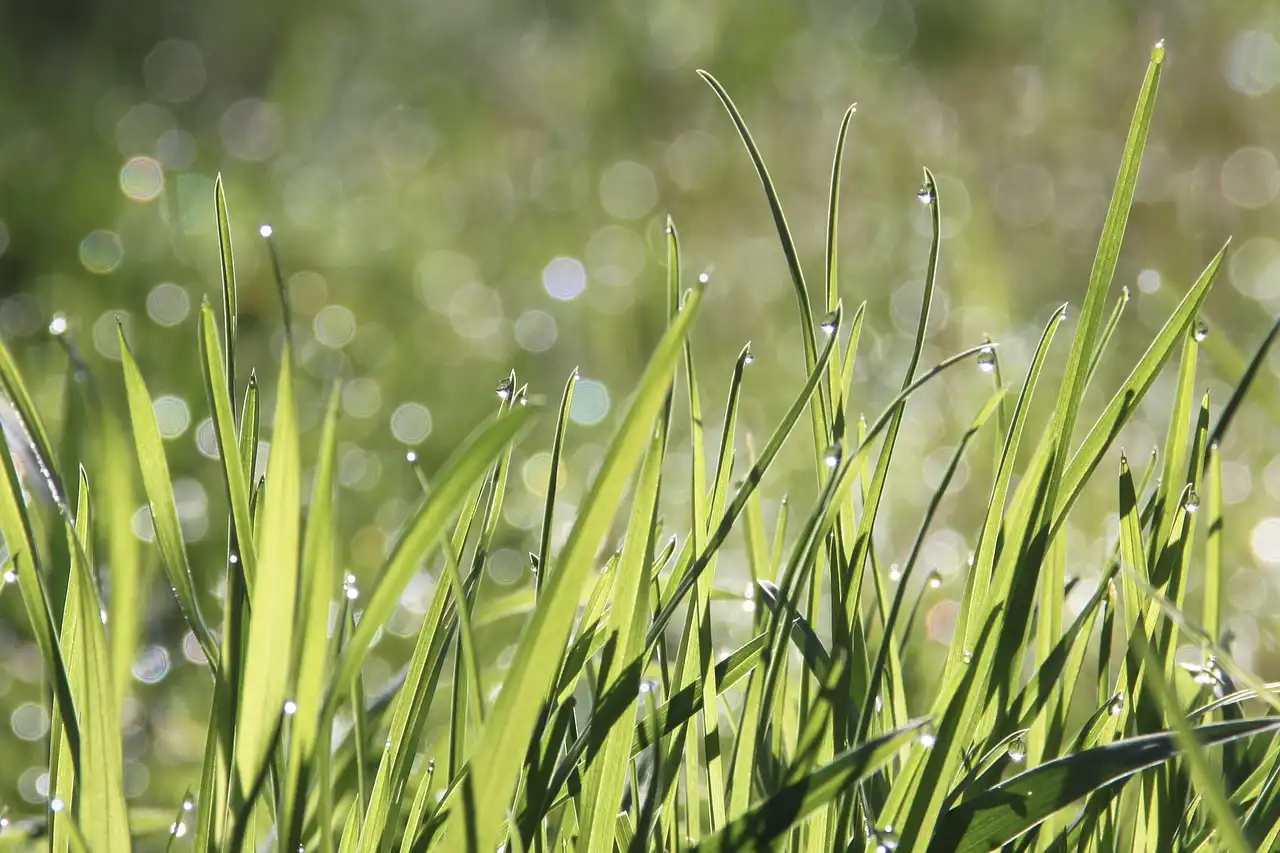ETH Zurich researchers have been able to show which genes inhibit self-fertilisation in grasses. Plant scientists can now use this mechanism in a more targeted way to breed new varieties of forage grasses as well as rice or barley.
Corn, rice, wheat, sugar cane – the grass family contains a number of species that are important food sources for humans and have been bred and cultivated for millennia. Wild and farm animals, too, depend heavily on grasses for feed: cows, sheep, horses as well as bison, deer and zebras predominantly eat grass. Almost 70 percent of Switzerland’s agricultural area is grassland.
A natural mechanism that complicates breeding
However, breeding grasses is difficult by nature. Like many other flowering plants, grasses have evolved a mechanism that prevents inbreeding after self-pollination. Experts call this mechanism ‘self-incompatibility’. It ensures that no pollen from the plant itself or from closely related individuals can grow towards the ovary and fertilise the egg cell. This prevents inbreeding, with all its consequences.
For plant breeding, self-incompatibility can be a disadvantage. It not only complicates the development of homozygous lines but can also affect the pollination of two closely related individuals. This makes it more difficult to achieve breeding progress for desired plant characteristics by crossbreeding. To be able to exploit different plant breeding strategies, precise knowledge of self-incompatibility is essential.
Self-incompatibility genes in grasses decoded for the first time
However, little is known about the genetic composition of self-incompatibility in grasses. In the 1960s, plant scientists discovered that self-incompatibility is controlled by two separate genome regions (loci). But with the methods available at the time, the researchers could not determine which genes are actually involved.
Now, for the first time, researchers led by Bruno Studer, Professor of Molecular Plant Breeding, have been able to identify the genes responsible for self-incompatibility and to determine their nucleic acid sequence. They did this in perennial ryegrass (Lolium perenne L.), one of the most important forage and turf grass species in the world.
‘This breakthrough was enabled by technological advances in genome analysis. It’s only in recent years that these have made it possible to efficiently sequence the entire genome of an individual organism.’
Bruno Studer
Studer has devoted over 15 years to this subject, together with collaborators from Denmark, Wales and the USA. In 2006, he found genes that reduce the seed yield in forage grasses. He was looking for the opposite: genes that increase seed yield. The genes he identified later turned out to play a role in self-incompatibility. In 2017, Studer and his team narrowed the two loci down to a few potential candidate genes. Now they have delivered a precise description of the three genes that effectively make up the loci and control self-incompatibility.
‘This breakthrough was enabled by technological advances in genome analysis. It’s only in recent years that these have made it possible to efficiently sequence the entire genome of an individual organism,’ he says.
These findings are opening up new breeding possibilities not only for forage grasses but also for important, self-pollinating grass crops for human consumption such as rice or barley. If the genes for self-incompatibility are known, they can be manipulated in specific ways. Switching them off makes it possible to develop inbreed lines. Another approach is to insert the genes into the genome of grasses that have lost their self-incompatibility so as to breed genetically diverse populations. For Studer, one thing is clear: ‘Knowledge of these genes has given us an important foundation for controlling this mechanism and using it for breeding.’
Interplay of two distant loci
Essentially, self-incompatibility is based on the interplay of the two loci – the S locus and the Z locus – which are located on different chromosomes.
The genes are the blueprint for three different proteins, which form a kind of lock-and-key mechanism that recognises whether the pollen that has landed on the stigma is genetically similar or unrelated. This sets off a signal that either aborts the fertilisation process or continues it to completion.
Studer and his team are currently studying the structures of these proteins and how they interact to differentiate between foreign pollen and the plant’s own pollen. For this, they use special artificial intelligence methods to model the structure of the corresponding proteins based on the gene sequence, along with models that predict the interactions between these molecules.
A unique self-incompatibility mechanism
In addition, the researchers have studied how self-incompatibility based on two loci could have evolved in the grass family, as all other mechanism known from other plant families are based on one locus only. It’s probable that in the evolutionary history of grasses, the Z locus initially duplicated, and that the copy then underwent numerous mutations, leading to diversification.
‘We’ve now sequenced the two loci in a great many grass plants. What we’ve found is that the S locus tends to have lower sequence variation and is still diversifying, while the Z locus doesn’t change as much. From this we conclude that the Zlocus might be older in evolutionary terms,’ Studer explains.
By tracing the phylogeny of grasses, the researchers have also learned when the locus duplication occurred and when the species diverged from one another. Moreover, the phylogenetic tree revealed which grasses did not undergo locus duplication and which species have lost their self-incompatibility, for instance through mutation.
But what is the evolutionary benefit of self-incompatibility based on two loci? ‘At first glance, we assume that it opened up a lot more possibilities and flexibility for plants in the grass family to recognise their own pollen,’ Studer says. This could have been important for the grass family, whose 16,000 species are distributed across all continents, making it one of the world’s largest and most successful plant families.
Read the paper: Molecular Biology and Evolution
Article source: ETH Zurich
Author: Peter Rüegg






